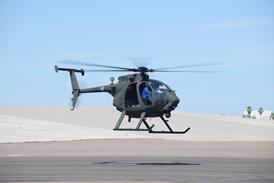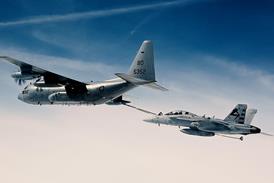Paul Lewis/TOKYO
The number of modern military forces which continue to operate amphibians is diminishing and there are even fewer manufacturers still building such aircraft. Japan is proving to be one exception to the rule. Not only does its navy maintain a fleet of flying boats, but it has also begun to fund development of an improved version.
Equally remarkable is ShinMaywa Industries, a company more commonly associated with airport airbridges and specialist vehicles. ShinMaywa's roots, however, are in building flying boats for the Japanese military. After more than 70 years in the business, it still clings to the traditional art to this day.
The Japan Maritime Self-Defence Force (JMSDF) has operated the existing generation of ShinMaywa US-IA search-and-rescue (SAR) amphibians since 1975. It maintains an operational fleet of seven aircraft, based at Atsugi and Iwakuni, providing SAR coverage to a radius of 1,850km (1,000nm) and, by March 1996, had been credited with saving 459 people.
The US-1A was developed from the earlier PS-1 anti-submarine-warfare flying boat, 23 of which were produced before being withdrawn from service. "We've delivered 15 US-IAs since 1975 and are building an attrition replacement every two years now. Number 16 is now in production and will be delivered in March 1998," says Takao Kawasaki, ShinMaywa general manager for aircraft sales.
ShinMaywa had been hoping to follow on from the US-1A with the development of a completely new design of amphibian, the US-X. The project was subsequently ditched in favour of Japan Defence Agency (JDA) funding for an improved version of the existing type. The planned ´66 billion ($570 million) programme was initiated in 1996 and is scheduled to take eight years to complete.
New equipment
The US-1A Kai, or modified version, will be equipped with four new 3,000kW (4,000shp)-class turboprop engines and six-bladed propellers, a redesigned wing, empennage and upper fuselage, fly-by-wire (FBW) flight controls, a new, integrated, "glass" cockpit and a search radar. The final configuration is still under study and could be subject to change, depending on cost.
ShinMaywa is aiming for a 50kt (95km/h) increase in the US-1A's 230kt cruise speed, by replacing its 2,600kW-rated, Ishikawajima-Harima Heavy Industries-built, General Electric T64-10J engines with more powerful turboprops. "The Allison AE2100 is one of the candidate engines, but it's not yet decided. We may also look at the Pratt & Whitney Canada PW150," says Kawasaki.
New, larger engines will in turn require changes to the amphibian's all-metal wing. One option under study is to fit a new carbonfibre-composite wing, along with a composite empennage, underwing floats and spray suppressor, but this again is subject to funding. Kawasaki explains: "One of the things we're trying to do is reduce the weight of the aircraft, but the Government is also asking us to cut the budget as much as possible."
Double ceiling
The JMSDF wants partial pressurisation of the US-1A's upper-hull cabin, which will double the aircraft's effective maximum operating ceiling to 20,000ft (6,100m). While the design of the amphibian's keel is to remain unchanged, the upper fuselage will require more rounded contouring for the cabin to be pressurised.
To reduce cockpit workload, particularly in rough sea landings, ShinMaywa plans to equip the new US-1A Kai with FBW flight controls. The existing design employs large, hydraulically activated, blown trailing-edge flaps, rudder and elevator to achieve low speed and short-take-off-and-landing performance. This places a heavy demand on pilots, explains Kawasaki.
Cockpit instruments will be upgraded with new flat-panel displays, compatible with night-vision equipment. The US-1A Kai will also be equipped with a new nose-mounted search radar in the form of a Thomson-CSF OceanMaster system. There is also likely to be a requirement for a forward-looking infra-red sensor.
Plans call for two flying prototypes to be built, along with two static-test airframes. The first aircraft is tentatively scheduled to have its first flight around 2002/3, but this again hinges on the pace of JDA funding. "Up until 1997, there is a firm line, but, after that, it all depends on the budget," says a cautious Kawasaki.
Development of the US-1A Kai will be headed by ShinMaywa as prime contractor, but will also include the participation of other Japanese manufacturers, including Kawasaki Heavy Industries (KHI), Fuji Heavy Industries and Nippi. Next to ShinMaywa, KHI will provide the largest number of engineers and is expected to take responsibility for the FBW system.
ShinMaywa's 600-strong aerospace workforce contributes to many other programmes, such as Boeing 777 wing-body fairings, Mitsubishi F-2 composite wing trailing-edges and McDonnell Douglas MD-80/90/95 engine pylons. The US-1A Kai, however, is its key to future survival as a fixed-wing-aircraft manufacturer. "This is a very important project for us," says Kawasaki. "It's the only one we have."
Source: Flight International























